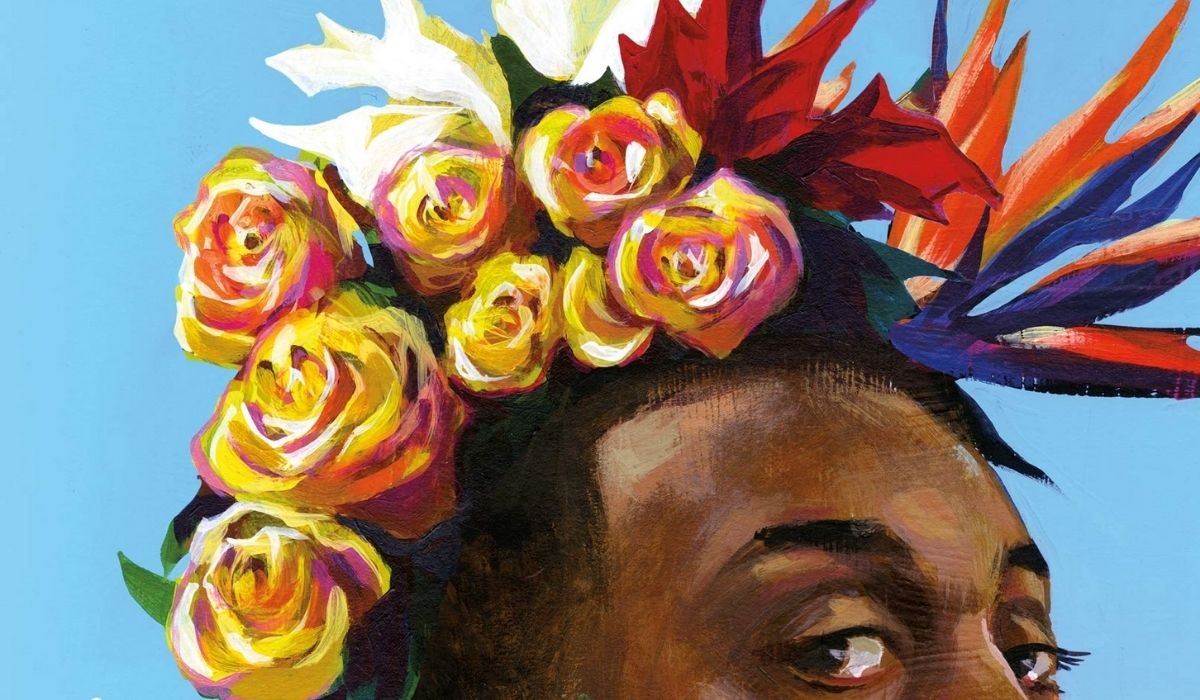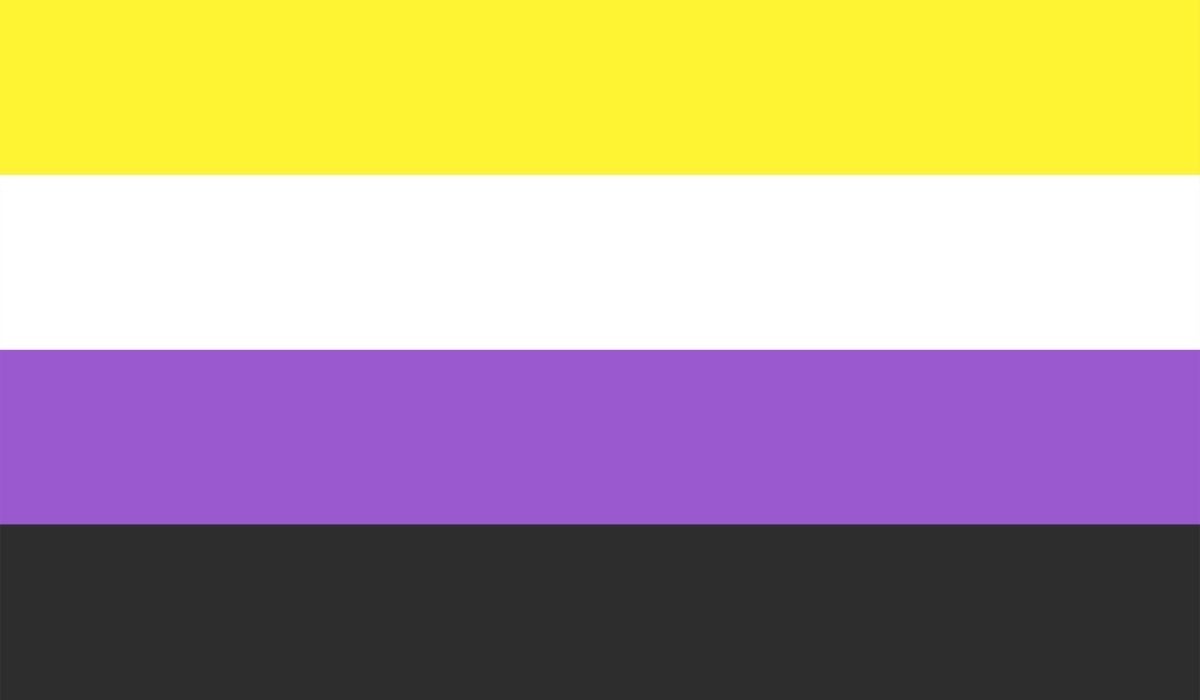Created by (then) teenager Kye Rowan in February 2014, the nonbinary flag features horizontal stripes of the colors yellow, white, purple (specifically lavender), and black. “Nonbinary” is an umbrella term that includes all those outside the gender binary. While the Tumblr page is now gone, many believe Rowan created this flag because some in the community didn’t feel like the genderqueer flag (made in 2011 by Marilyn Roxie) fully represented them. While the genderqueer flag is still in use, the fact that the colors share U.K. suffragettes’ palette and, now, U.K. TERFs use the colors online, makes it a complicated situation.
Before getting into the colors of the nonbinary flag, and more, it’s essential to lay down some basic information. Being nonbinary is not a sex category (separate from intersex and biology) or sexual orientation. Enbies (nonbinary people) can (but don’t have to) identify with any sexuality. While some of the more visible Enbies will use they/them, they aren’t beholden to one set of pronouns, so it’s always good to just look it up or ask just like you would of anyone.
Also, despite the media representation, people of color and fat people can be nonbinary. Slimmer white people get most of the attention on this, but there is no “one way” or “look” to be nonbinary, just like there’s no one way to be cisgender, transgender, etc. Despite what TERFs and angry family members on Facebook say, Enbies have existed in various cultures worldwide (under different names) for thousands of years.
Color meanings

Almost all LGBTQ+ flags were created in the internet age and exist in the public domain. Creators share the hex code (numbers and letters relaying exact color). Yellow (#FFF433) represents people whose gender exists outside the binary. (It’s also the third primary color aside from blue and red.) White (#FFFFFF) represents people of many or all genders and refers to the presence of all light. Lavender (#9B59D0) represents a mix of manness (blue) and womanness (pink). Finally, black (#2D2D2D) represents people with no gender and refers to the absence of all light.
Like gender, colors are very much tied to ever-shifting cultural expectations. For example (regarding lavender), pink had been associated with masculinity until the 1950s. Lavender was used by both Rowan and Roxie due to its historical and cultural significance. The “Lavender Scare” refers to the anti-gay witchhunt during the Red Scare. Lavender linguistics is words and phrases that came out of the queer community. Many (but not all) elements of lavender linguistics first came from the Black LGBTQ+ people—making many of the words of phrases also a part of African American Vernacular English (AAVE).
(featured image: Creative Commons)
—The Mary Sue has a strict comment policy that forbids, but is not limited to, personal insults toward anyone, hate speech, and trolling.—










Published: May 31, 2022 05:54 pm